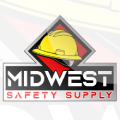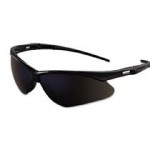Eye injuries in workplaces are quite common. Such mishaps can happen at any tie and make a worker miss some his working days. Reports by the Industrial Safety Equipment Association(ISEA) suggest that 68% of all employees in the US who should be using protective eyewear actually don’t.Therefore, employers need to ensure that affected workers use proper eye protection while exposed to acids, molten metal, caustic liquids, chemical gases or vapors, or injurious light radiation. The eye protection that the employees use should have side protection when they are exposed to flying objects. There are some safety glasses that come with detachable side protectors that can provide the necessary protection.
Employers also need to ensure that an affected employee wears prescription lenses while handling operations that may cause eye hazards. The lenses need to incorporate the prescription in its design. Factory owners also need to make sure that affected employees use equipment with filter lenses that have a shade number that is suitable for the work being done for protection from injurious light radiation. The Occupational Safety and Health Administration (OSHA) has very strict norms related to protective eyewear. Regulation 29 CFR 1910.133 mandates the type of protective eyewear workers need to wear. It also covers the general responsibilities of an employer.
Most of the protective eyewear produced these days have almost no lens distortion and come with high-quality optics. As a result, an industrial worker can use the eyewear over a long period without any sort of discomfort. Lenses usually come with permanently anti-scratch and anti-fog coatings. People looking for indoor-outdoor versions of lenses that will enable them to move from outdoors to warehouse should opt for the ones that come with a subtle mirror coating that balances the light levels.
The majority of the safety spectacle lenses are made from optical-grade polycarbonate. They are lighter and more impact resistant as compared to tempered glass, and can, therefore, provide more protection. One of the major plus points of polycarbonate is that it can be molded into different shapes with high optical clarity and in-built ultra-violet filtration. Protective eyewear is available in different configurations for any type of application. Industrial workers can either use prescription safety glass or the OTG(Over the Glass) model that fits normal prescription spectacles. RX inserts can also be a suitable choice. As they can be fitted with the particular prescription of the wearer and then attached into the frame of a well matched standard safety eyewear. This design isn’t as bulky as the OTG spectacle.
It would be wise for employers to offer their staff a choice of compliant eyewear and allow them to select the models that suit them. This will ensure that the eyewear they use fit their requirements as well as their different head shapes. Once factory workers start using prescribed safety glasses, instances of eye-related injuries will go down. The productivity levels of businesses won’t suffer as a result.




